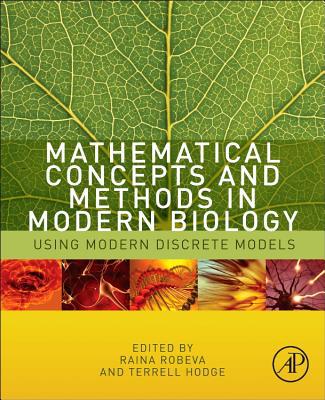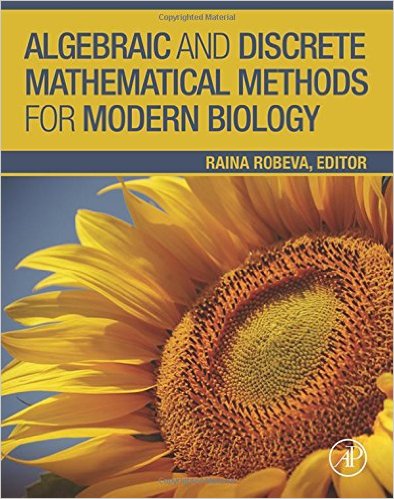Math 4500, Fall 2017
Math 4500, Fall 2017


"Mathematics is biology's next microscope, only better; Biology is
mathematics' next physics, only better." --Joel E. Cohen
"All models are wrong, but some are useful." --George E. P. Box
About the class
This class will be an introduction to mathematical modeling with a
particular focus on mathematical biology. We will sample from a
variety of problems and modeling techniques throughout the
class. Unlike most undergraduate math classes, the scope of this class
will be more about breadth than depth.
We will begin with some classical models such as the logistic and
predator-prey models for population growth and the SIR model in
epidemiology. The second half of the class will be spent learning about a
relatively new but widely popular trend of discrete modeling. In
particular, the field of mathematical biology has been transformed
over the past 15 years by researchers using novel tools from discrete
mathematics and computational algebra to tackle old and new
problems. These ideas have impacted a wide range of topics such as
gene regulatory networks, RNA folding, genomics, infectious disease
modeling, phylogenetics, and ecology networks and food-webs. In some
cases they have even spawned completely new research areas. This is
approach is arguably more accessible and appealing to many scientists
and engineers, encouraging cross-disciplinary communication and
collaborations.
Resources
Software
Code
Homework
- HW 1: pdf |
tex. Topic:
Difference and differential equation models. Due Thursday,
August 31.
- HW 2: pdf |
tex. Topic: Population
models and linearization. Due Thursday, September 7.
- HW 3: pdf |
tex. Topic:
Models of structured populations and predator-prey models. Due Thursday, September 14.
- HW 4: pdf |
tex. Topic:
Predator-prey models and infecious disease models. Due
Tuesday, September 26.
- HW 5: pdf |
tex. Topic: Biochemical reaction networks. Due Tuesday, October 3.
- HW 6: pdf |
tex. Topic: Cellular automata and agent-based models. Due Tuesday, October 10.
- HW 7: pdf |
tex. Topic: Gröbner bases and fixed points of Boolean networks. Due Thursday, October 19.
- HW 8: pdf |
tex. Topic: Bistability, degradation, and time-delays in Boolean networks. Due Tuesday, November 1.
- HW 9: pdf |
tex. Topic: Reduction of Boolean networks. Due Tuesday, November 7.
- HW 10: pdf |
tex. Topic: Reverse engineering using computational algebra. Due Thursday, November 16.
Lecture notes
Part I. Differential and difference equations
- Introduction to modeling. 4 pages
(handwritten). Updated Jan 22, 2013.
-
Difference equations. 12 pages. Updated Jan 12, 2015.
- Analyzing nonlinear models.
4 pages (handwritten). Updated Jan 22, 2013.
- Models of structured populations. 8 pages. Updated
Jan 21, 2015.
- Predator-prey models. 11 pages. Updated Jan 28,
2015.
- Infectious disease modeling. 12 pages. Updated Feb
9, 2015.
- Modeling biochemical reactions. 10 pages. Updated
Feb 4, 2015.
Part II. Discrete and agent-based models
- Cellular automata and agent-based models. 18 pages. Updated February 11, 2015.
-
Boolean models of the lac operon in E. coli. 43 pages. Updated February 8, 2017.
- Bistability in ODE and Boolean network models. 28 pages. Updated Mar 09, 2017.
- Dilution, degradation, and time delays in Boolean network models. 18 pages. Updated Mar 08, 2017.
- Reduction of Boolean network models. 18 pages. Updated Oct 31, 2017.
- Reverse engineering using computational algebra 29 pages. Updated Nov 10, 2017.
Part III. Stochastic models: genetics, nucleic acids and phylogenetics
- CpG islands and hidden Markov models. 12 pages. Updated October 28, 2016.
- Hidden Markov models and dynamic programming. 12 pages. Updated April 19, 2017.
- Combinatorial approaches to RNA folding. 16 pages. Updated April 15, 2016.
- RNA folding via energy minimization. 15 pages. Updated April 15, 2016.
- RNA folding via formal language theory. 14 pages. Updated April 15, 2016.

